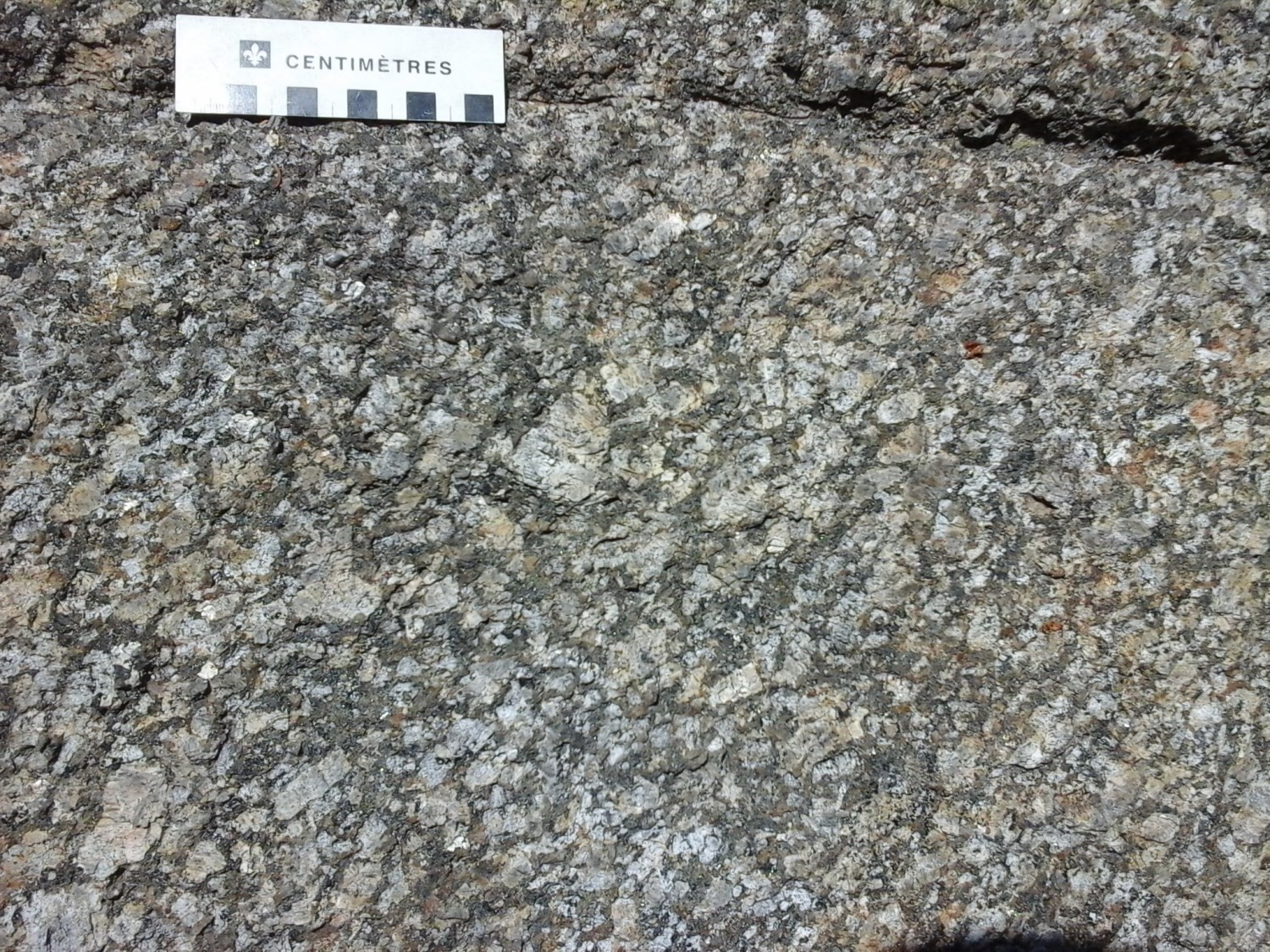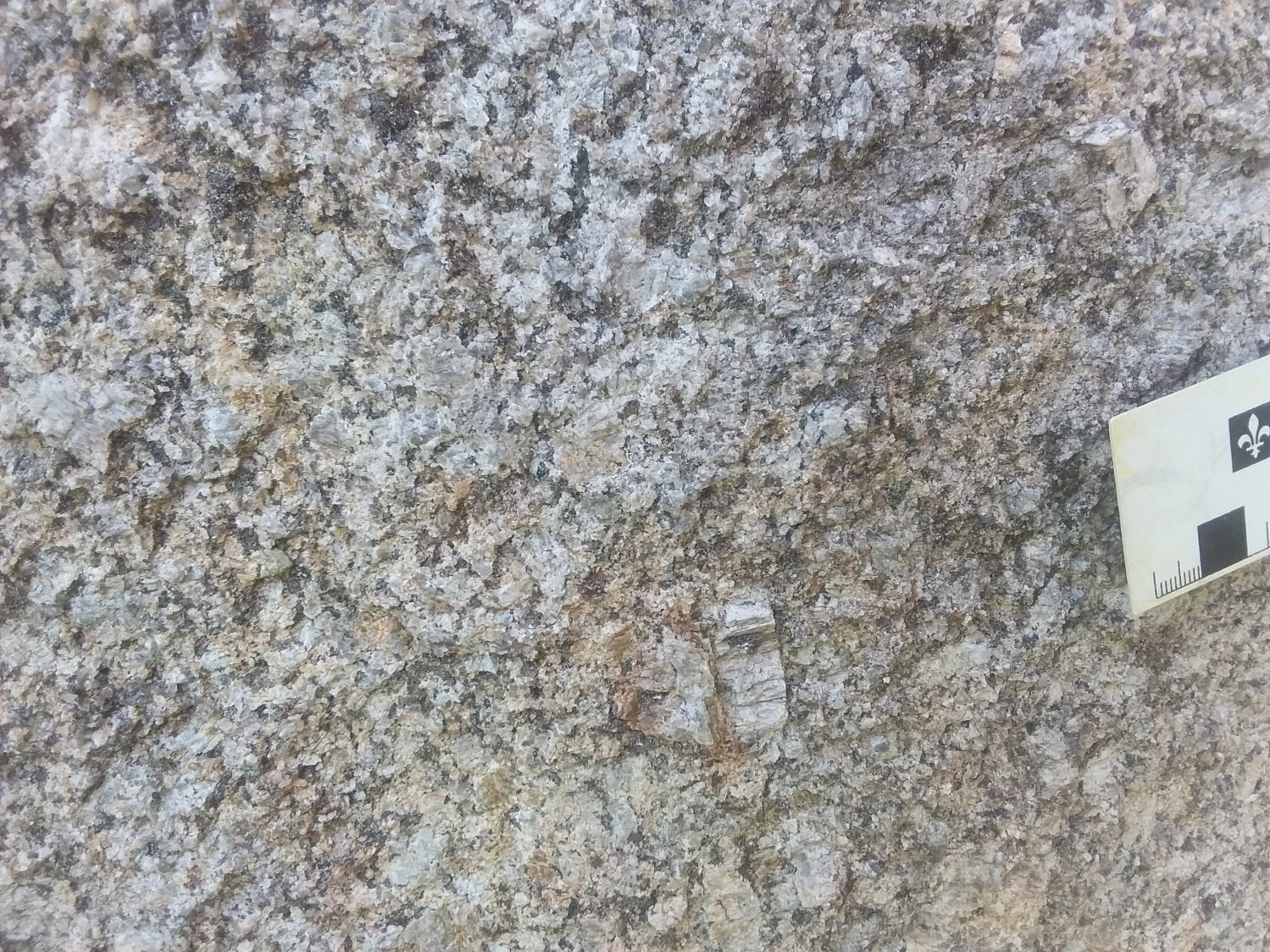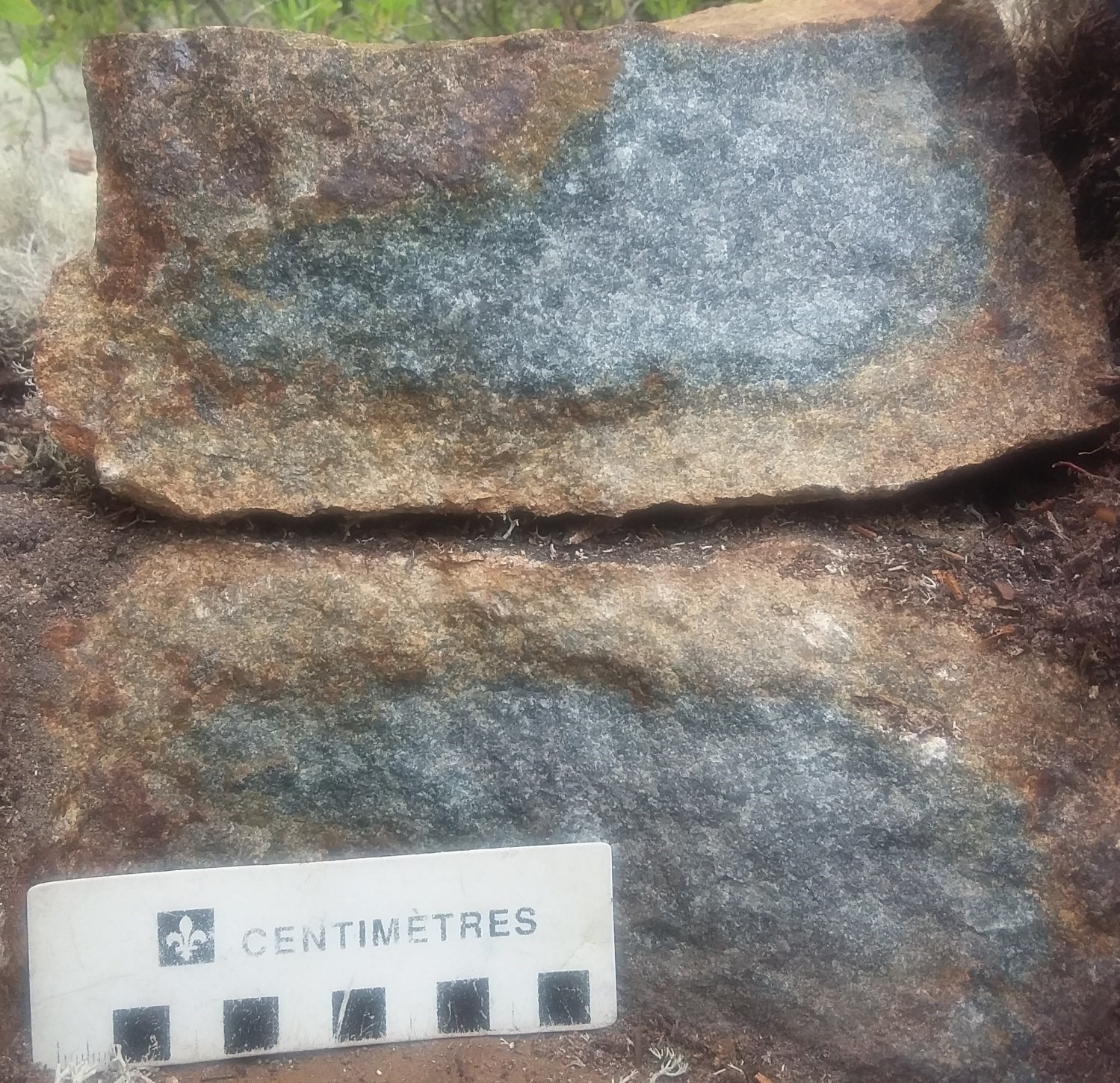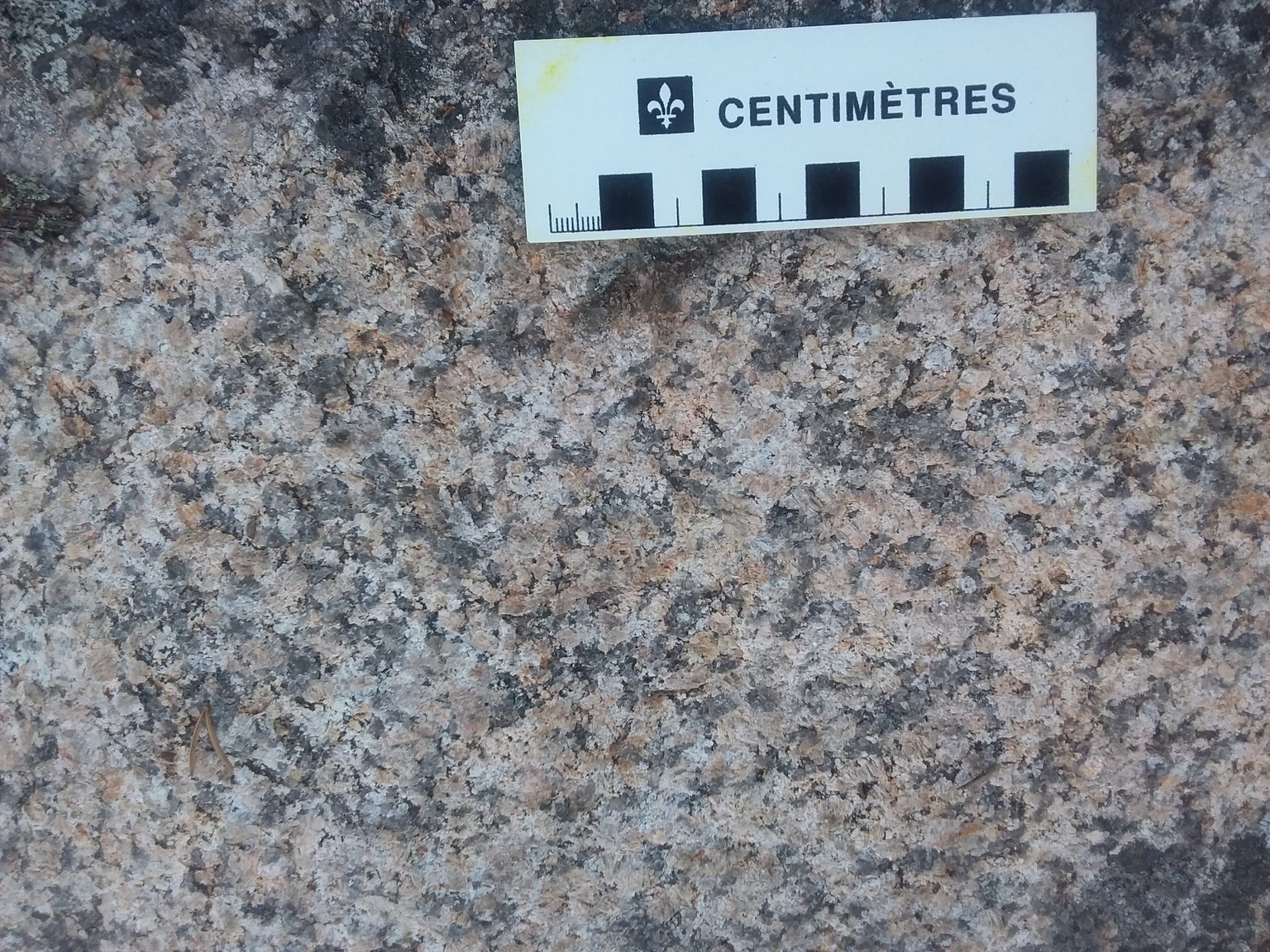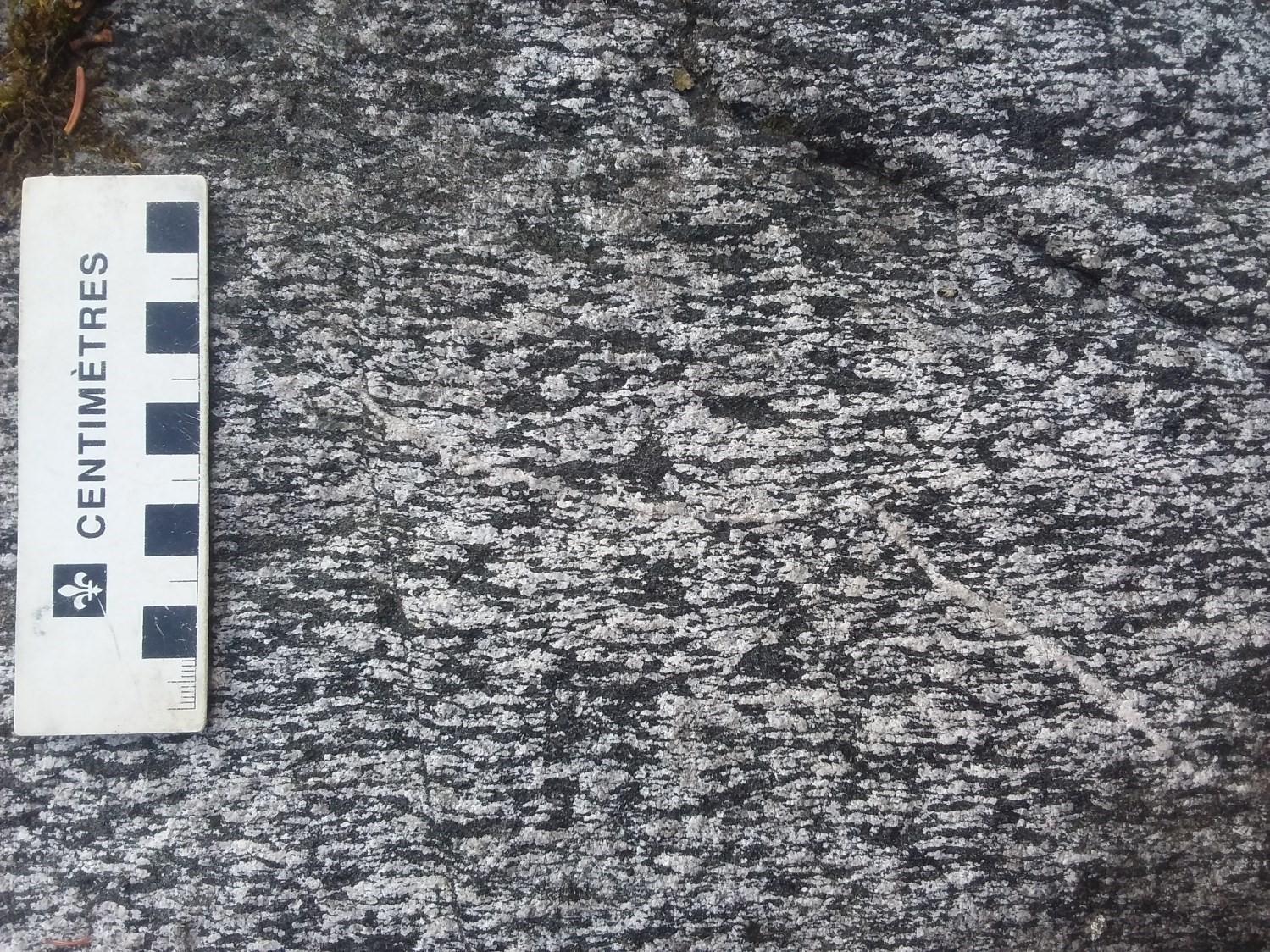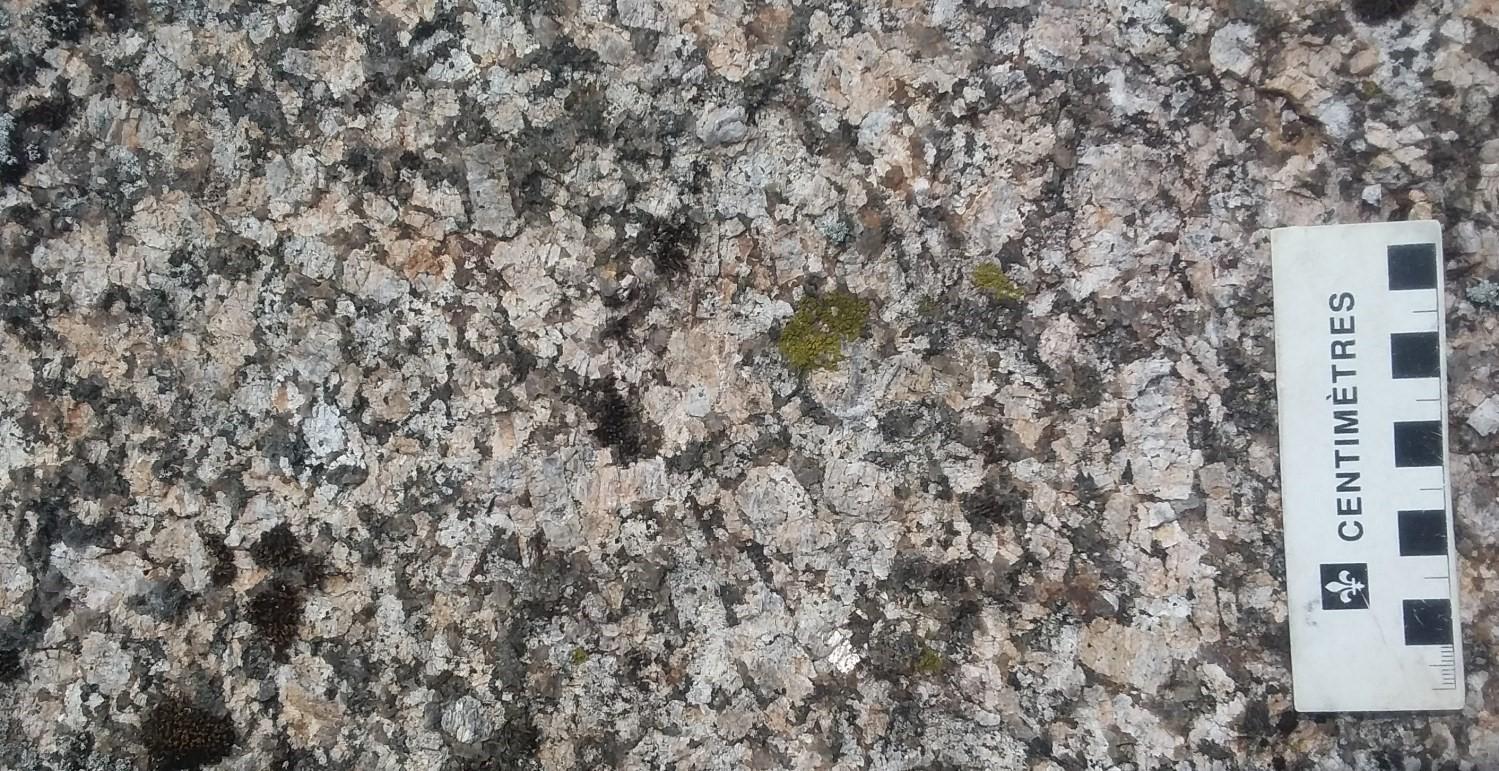
None
| Author: | Moukhsil and Daoudene, 2019 |
| Age: | Mesoproterozoic |
| Reference section: | Reference outcrops (e.g., 18-YD-2188) located SW of Équerres Lake and at Commissaires Lake |
| Type area: | NTS sheet 32A08 |
| Geological province: | Grenville Province |
| Geological subdivision: | Allochton |
| Lithology: | Felsic, intermediate and mafic intrusive rocks |
| Type: | Lithodemic |
| Rank: | Suite |
| Status: | Formal |
| Use: | Active |
None
Background
The Thaddé Plutonic Suite was defined by Moukhsil and Daoudene (2019) during mapping of the Commissaires Lake area in the Saguenay–Lac-Saint-Jean region.
Description
The Thaddé Plutonic Suite is a large polyphase batholith consisting mainly of mangerite and orthopyroxene quartz syenite. It also contains granite, alkaline feldspar granite, charnockite, monzodiorite, minor amount of gabbronorite and metasedimentary rock enclaves of the Barrois Complex.
The mangeritic facies covers the largest area of the Thaddé Plutonic Suite. Mangerite is whitish to brownish in altered patina, greenish black in fresh exposure, coarse grained and locally porphyritic to megacristic. It contains 5 to 20% quartz in large 1 to 2 cm crystals with undulatory extinction. K-feldspar and plagioclase phenocrystals can make 25 to 35% of the rock. They are 2 to 4 cm long on average, but some crystals can reach 7 cm. In places, K-feldspar content is less than 2% and the rock appears to have a more hypersthene quartz monzodiorite composition. Mangerite contains orthopyroxene grains with a uralitized amphibole rim. Amphibole is the most abundant ferromagnesian mineral in the rock (up to 5%). It is associated with opaque minerals, including magnetite. Generally, mangerite is massive, but locally affected by foliation.
Orthopyroxene quartz syenite is magnetic, rusty brown in altered patina and greenish in fresh exposure. It contains 40-45% K-feldspar, including perthitic phenocrystals, 15-20% plagioclase, 5-20% quartz, approximately 7% orthopyroxene millimetric grains, 1% clinopyroxene and 3% green hornblende. Apatite and zircon are accessory mineral phases.
Granite (syenogranite and monzogranite) is grey-pink in altered patina and pinkish in fresh exposure. It is coarse grained but locally perthitic K-feldspar porphyritic. It has biotite and hornblende contents of less than 2-3%. In the field, quartz and feldspar contents vary from one outcrop to the other; rock composition varies between granite, alkaline feldspar granite and syenite. Granite also contains myrmekite and its most common accessory mineral phases are opaque minerals, apatite and zircon.
Charnockite is brown-beige in altered patina and greenish in fresh exposure. It resembles the manganese facies described above. Quartz content varies within the same outcrop (2-30%). Charnockite contains about 30% K-feldspar and plagioclase phenocrystals, usually 6 cm long. It is homogeneous and massive. The different mineral phases show no particular preferential orientation. Charnockite is composed of 30% perthitic K-feldspar, 25% plagioclase locally altered to white mica, 30% quartz, 3% orthopyroxene, 2% green hornblende forming rims around orthopyroxene, 5% biotite and 5% accessory minerals including apatite, epidote, zircon and opaque minerals.
In outcrop, gabbronorite is generally grey-black in altered patina and greenish black in fresh exposure. It is medium to coarse grained, magnetic, homogeneous, heterogranular and affected by well-developed foliation. In thin section, plagioclase appears altered (to white mica), especially along grain edges. Ferromagnesian minerals are mainly biotite and green hornblende. Pyroxene is mostly observed in outcrop, whereas it is only visible in trace and small grains in thin section. The presence of a higher hornblende content (20%) relative to pyroxene likely indicates that gabbronorite was amphibolitized. The main mineral phases are apatite and opaque minerals. In some places, gabbronorite is greener in fresh exposure and finer grained. Locally, it contains garnet as well as millimetric pyroxene grains included in large green hornblende crystals. Pyrrhotite and pyrite (1-2%) are disseminated.
Thickness and Distribution
The Thaddé Plutonic Suite forms a large batholith with an area of approximately 300 km2. This batholith is mapped in NTS sheets 32A01 and 32A08.
Dating
None.
Stratigraphic Relationship(s)
The Thaddé Plutonic Suite is in fault contact with the Ouiatchouan Anrthositic Suite and intrudes into the Belley Plutonic Suite. It appears to be intruded by the Sainte-Hedwidge Intrusive Suite, Travers Suite and Claire Gabbronorite. It contains metasedimentary rock enclaves of the Barrois Complex.
Paleontology
Does not apply.


